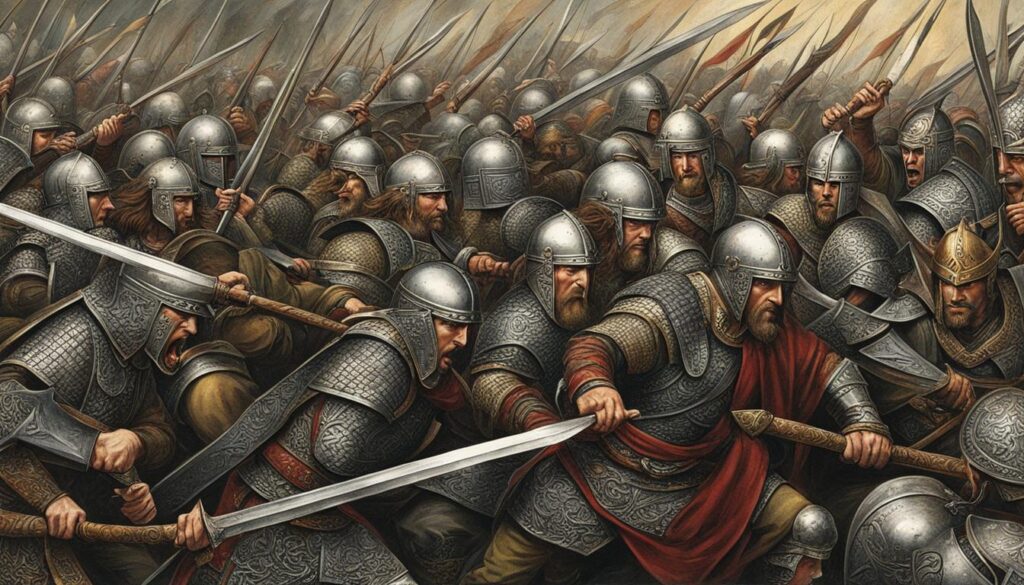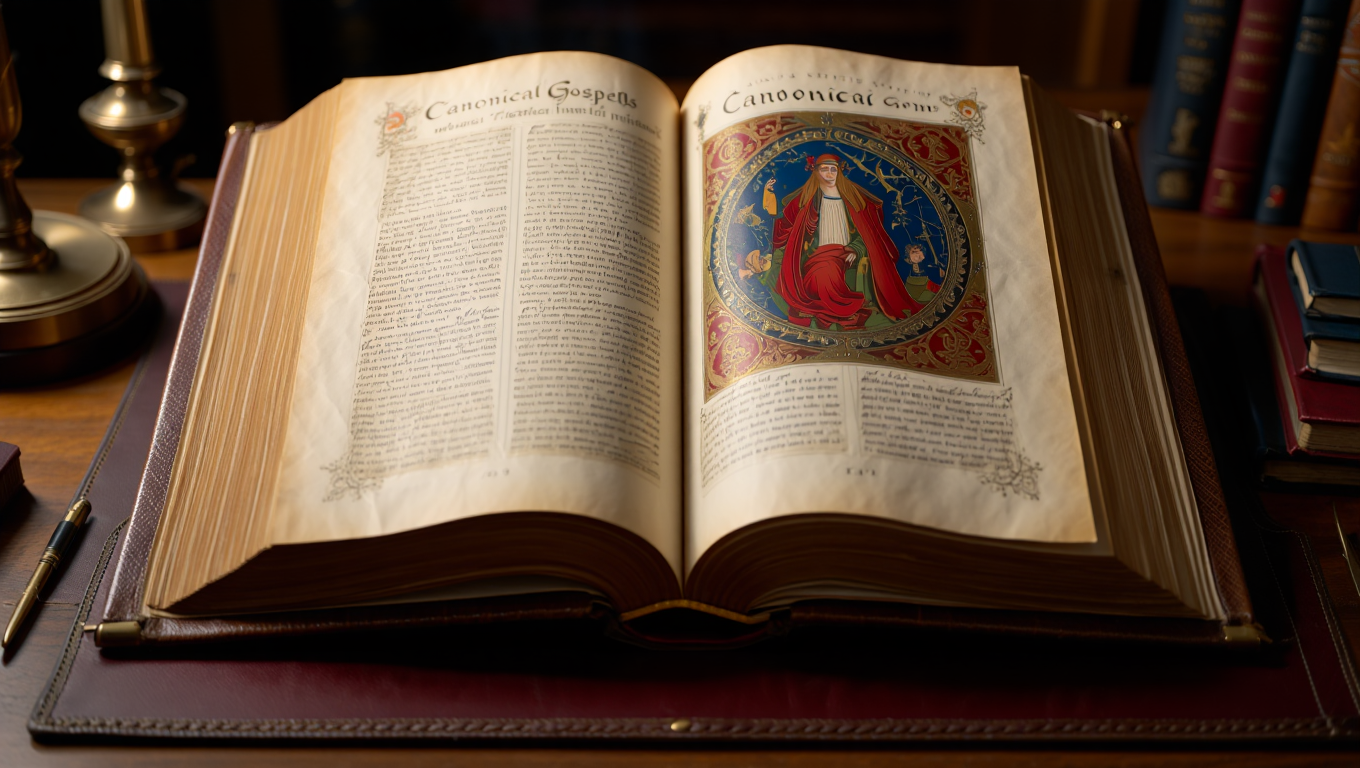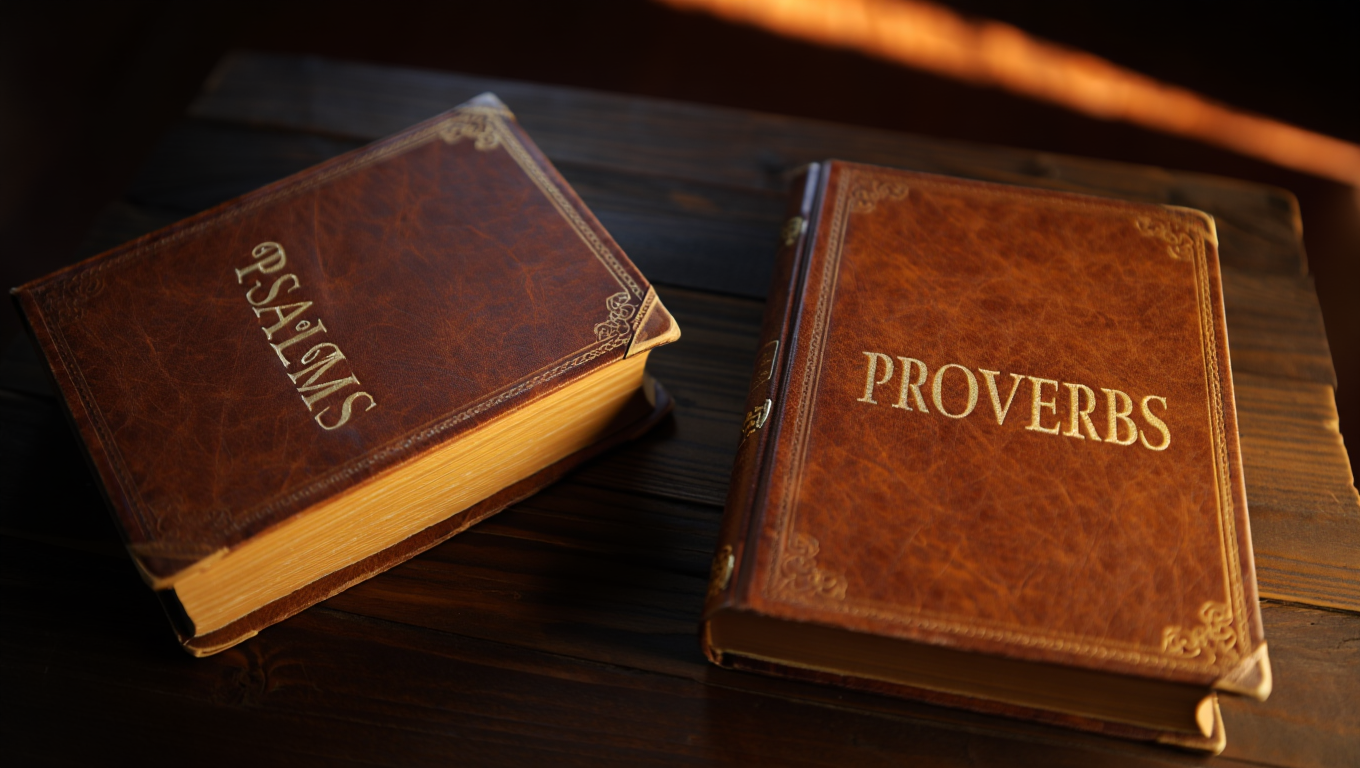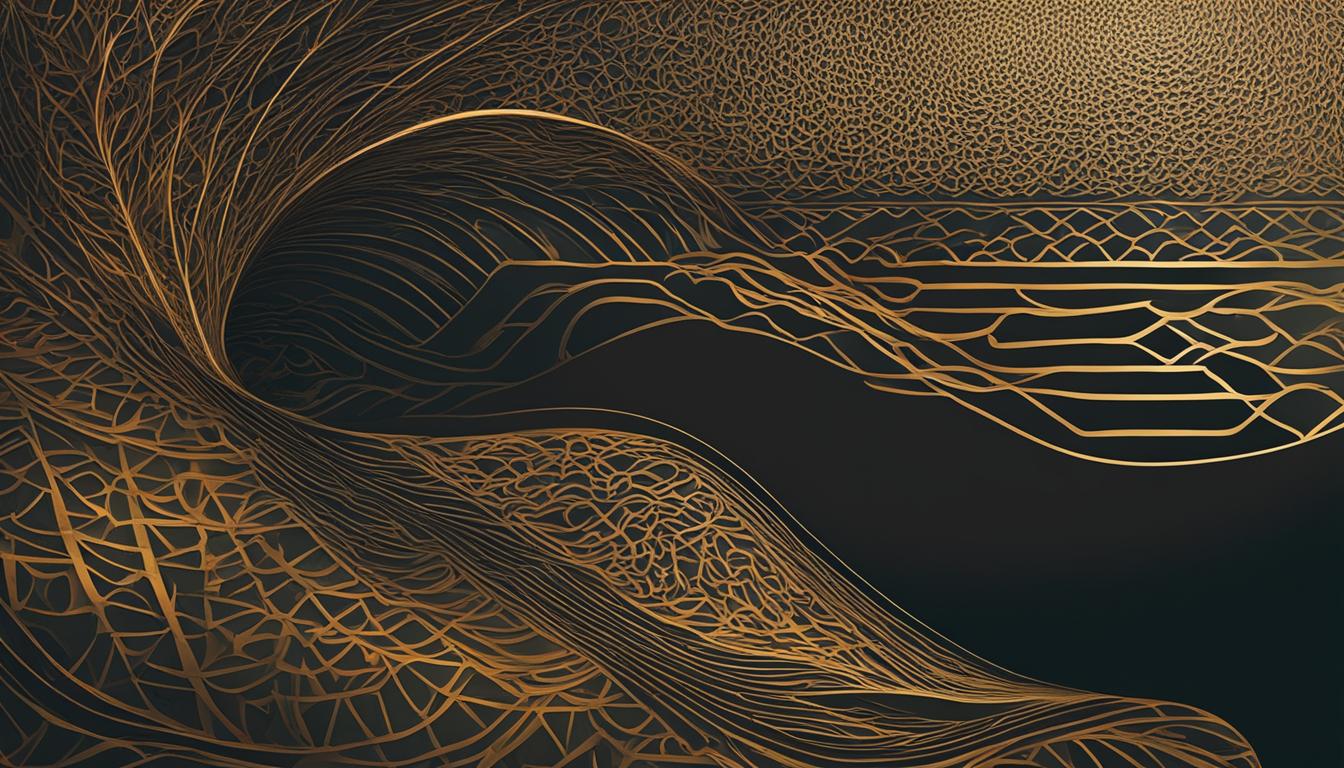The Celts and Norse were two ancient cultures that significantly influenced the development of Europe. While they existed in different regions and at different times, there are similarities and differences worth exploring. The Celts lived in Central and Western Europe during the Iron Age and Medieval Period, known for their fierce warriors and rich mythology. The Norse, on the other hand, lived in Scandinavia during the Viking Age and were renowned for their seafaring skills and exploration. Both cultures had a strong connection to nature and believed in a pantheon of gods and goddesses.
Despite their geographical and temporal differences, the mythologies of the Celts and Norse share intriguing parallels and divergences. This article explores the key aspects and contrasts of their mythological texts, uncovering insights into their beliefs and cultural influences.
Key Takeaways:
- Both Celtic and Norse mythologies showcase a rich pantheon of gods and goddesses.
- Celtic mythology emphasizes a deep connection with nature, while Norse mythology focuses more on exploration and warfare.
- Comparing Celtic and Norse mythological texts sheds light on their unique storytelling traditions and cultural influences.
- The Celts and Norse both contributed significantly to the cultural and historical development of Europe.
- Exploring the similarities and differences between Celtic and Norse mythologies provides valuable insights into the diverse beliefs and worldviews of ancient European civilizations.
Beliefs and Religion
Both the Celts and Norse were polytheistic cultures that believed in multiple gods and goddesses who controlled different aspects of the world. The Celts believed in the forces of nature, such as the sun, moon, and stars, and attributed meanings to the different moon cycles. The Norse had a similar belief system but their gods and goddesses were more warlike and had a more prominent role in their daily lives. The supreme god in Norse mythology was Odin, while in Celtic mythology it was Dagda. Both cultures eventually converted to Christianity, leading to the decline of their traditional beliefs and practices.
Celtic Pantheon vs Norse Pantheon
| Celtic Pantheon | Norse Pantheon |
|---|---|
| Dagda – Supreme god | Odin – Supreme god |
| Brigid – Goddess of healing, poetry, and smithing | Freya – Goddess of love, beauty, and fertility |
| Lugh – God of craftsmanship and skill | Thor – God of thunder, strength, and protection |
| Morrigan – Goddess of war, fate, and death | Loki – Trickster god |
Differences in Celtic and Norse religious beliefs can be seen in their respective pantheons. The Celtic pantheon had gods and goddesses associated with different aspects of nature and daily life, such as healing, craftsmanship, and war. In contrast, the Norse pantheon contained gods and goddesses who embodied concepts like love, fertility, thunder, and trickery. While there were similar themes and overlapping roles, the specific deities and their attributes were distinct to each culture.
Celtic Gods and Goddesses
- Dagda – Supreme god
- Brigid – Goddess of healing, poetry, and smithing
- Lugh – God of craftsmanship and skill
- Morrigan – Goddess of war, fate, and death
Norse Gods and Goddesses
- Odin – Supreme god
- Freya – Goddess of love, beauty, and fertility
- Thor – God of thunder, strength, and protection
- Loki – Trickster god
Celtic and Norse Lifestyle and Patterns
The Celts and Norse had distinctive lifestyles and patterns that were shaped by their geographical locations and cultural practices. While they shared similarities in certain aspects, such as relying on agriculture and fishing for survival, there were also notable differences in their focus and societal structures.
Celtic Agriculture vs Norse Seafaring
Table: Comparison of Celtic Agriculture and Norse Seafaring
| Celtic Agriculture | Norse Seafaring |
|---|---|
| Relied on agriculture for sustenance | Focused on seafaring and exploration |
| Emphasized the cultivation of crops such as wheat, barley, and oats | Mastered the art of shipbuilding and navigation |
| Established settled communities and practiced intensive farming | Engaged in trade, raiding, and colonization |
The Celts primarily relied on agriculture, cultivating crops such as wheat, barley, and oats to sustain their communities. They established settled communities and practiced intensive farming. In contrast, the Norse were renowned for their seafaring skills and exploration. They mastered the art of shipbuilding and navigation, allowing them to engage in trade, raiding, and colonization.
Celtic Tribal Communities and Norse Egalitarian Society
The societal structures of the Celts and Norse also differed significantly. The Celts had complex tribal communities with a hierarchical social structure. They had chiefs and warriors who held positions of authority, while the rest of the community worked collectively to maintain their way of life.
In contrast, the Norse had a more egalitarian society where men and women had relatively equal rights and opportunities. Norse women enjoyed more freedom and autonomy compared to many other cultures of the time. This equality was reflected in their legal systems, where women could inherit property and hold positions of power.
Both cultures had their own respective lifestyles and patterns, influenced by factors such as geography, cultural practices, and societal structures. The Celts relied on agriculture and established settled tribal communities, while the Norse excelled in seafaring and had a more egalitarian society. These differences contributed to the unique identities and legacies of these ancient civilizations.
Similarities and Differences
When comparing Celtic and Norse mythologies, it becomes evident that there are both similarities and differences between the two cultures. Both Celtic and Norse mythologies are rich in stories and legends that have captivated audiences for centuries. Here, we will explore some of the key similarities and differences in terms of storytelling traditions, artwork, societal structures, and burial practices.
Storytelling Traditions
Both the Celts and the Norse had strong storytelling traditions that played a significant role in preserving their myths and legends. The tales of heroes, gods, and mystical creatures were passed down orally through generations. These stories often served as a way to explain natural phenomena, historical events, and cultural values. While the specific stories may differ between the two cultures, the tradition of oral storytelling as a means of preserving and sharing cultural heritage is a common thread.
Celtic and Norse Art
Celtic and Norse art reflect the mythological beliefs and cultural values of their respective societies. Celtic art is known for its intricate patterns and symbolism, often incorporating imagery of animals, nature, and mythological figures. Norse art, on the other hand, is characterized by its bold and dynamic style, with intricate knotwork and depictions of mythical creatures like dragons and serpents. Despite their stylistic differences, both forms of art showcase the importance of myth and spirituality in Celtic and Norse cultures.
| Celtic Culture | Norse Culture | |
|---|---|---|
| Storytelling Traditions | Oral tradition passed down through generations | Oral tradition passed down through generations |
| Art | Intricate patterns, symbolism, nature imagery | Bold and dynamic style, knotwork, mythical creatures |
Societal Structures and Burial Practices
The Celtic and Norse societies had distinct societal structures and burial practices. The Celts had a complex social hierarchy, with kings, warriors, druids, and commoners playing different roles in their communities. They held elaborate burial rituals, often involving funeral pyres and burial mounds. The Norse, on the other hand, had a more egalitarian society where men and women had equal rights. They were known for their ship burials and funeral pyres, symbolizing their connection to the sea and the afterlife.
In summary, while Celtic and Norse mythologies share similarities in terms of storytelling traditions and the importance of art, there are also significant differences in their societal structures and burial practices. Exploring these similarities and differences provides insight into the rich mythological and cultural heritage of both the Celtic and Norse people.
Historical Background: Celts vs Norse
The Celts and Norse were two distinct groups of people who lived in Europe during different periods of history. The Celts existed during the Iron Age and were spread across Europe, including Gaul, Britain, and Central Europe. They were known for their warrior culture and intricate metalwork. The Celts had a proud and independent spirit, with a strong emphasis on tribal communities and oral traditions. However, their dominance in Europe came to an end with the Roman conquest of Celtic territories. The Romans assimilated the Celtic tribes into their culture, resulting in the decline of Celtic language and traditions.
On the other hand, the Norse, also known as the Vikings, emerged during the early Middle Ages in Scandinavia. They were skilled seafarers and engaged in extensive exploration, raiding, and trading activities across Europe. The Vikings left a significant impact on the regions they visited and settled, including Britain, Ireland, and France. Their influence can be seen in various aspects of European culture, such as language, art, and architecture. The Viking Age came to an end with the Christianization of Scandinavia and the decline of Viking activities.
Norse Impact on Europe
The Viking invasions had a profound impact on Europe. They disrupted existing political and social structures, leading to the formation of new kingdoms and the spread of Norse influence. The Vikings established settlements and trading posts in various parts of Europe, facilitating cultural exchange and trade. They also introduced new technology, such as advanced shipbuilding techniques, which greatly influenced maritime activities in Europe. Additionally, the Vikings’ reputation for raiding and warfare instilled fear in many European communities, resulting in changes in defense strategies and the rise of fortified settlements.
Despite their reputation as fierce warriors, the Norse also had a rich cultural and mythological tradition. Norse mythology, with its pantheon of gods and intricate tales, showcases their worldview and values. The Norse gods, such as Odin, Thor, and Loki, are still widely recognized today and have influenced popular culture. The Viking Age may be remembered for its raids and conquests, but the Norse cultural legacy extends beyond their military exploits.
| Celtic Tribes | Norse Tribes |
|---|---|
| Spread across Europe, including Gaul, Britain, and Central Europe | Originated in Scandinavia |
| Known for their warrior culture and intricate metalwork | Famous for their seafaring skills and exploration |
| Emphasized tribal communities and oral traditions | Focused on exploration and raiding |
| Assimilated into Roman culture after Roman conquest | Christianized and declined after the Viking Age |

Celtic Culture and Beliefs
The Celtic culture is known for its rich spirituality and deep reverence for nature. The ancient Celts believed in the interconnectedness of all living things and had a profound respect for the natural world. They saw the divine in everything around them, from the towering trees to the flowing rivers. This connection to nature was at the heart of their spiritual beliefs.
Central to Celtic spirituality were the Druids, who served as spiritual leaders and advisers. The Druids played a significant role in preserving the Celtic traditions and passing down the wisdom of their ancestors. They were not only religious figures but also poets, healers, and lawmakers. The Druids had a deep understanding of the natural cycles and were believed to have the ability to communicate with the gods and goddesses.
Celtic mythology was a cornerstone of the culture, with a pantheon of gods and goddesses who embodied different aspects of life and nature. The Celtic gods and goddesses were often associated with specific elements, such as the sun, the moon, or the sea. They had both nurturing and destructive aspects, reflecting the duality of existence. The Celts believed in an afterlife and the concept of reincarnation, where the soul would continue to journey and learn from different lifetimes.
The Importance of Celtic Mythology
Celtic mythology played a vital role in the lives of the Celts, shaping their worldview, rituals, and storytelling traditions. Myths and legends were passed down through generations, often through oral tradition. These stories served as a way to understand the mysteries of the world, teach moral lessons, and connect with the divine. They were also a source of inspiration and entertainment, bringing communities together through shared narratives.
| Celtic Beliefs | Celtic Mythology | Druids |
|---|---|---|
| Deep reverence for nature | Pantheon of gods and goddesses | Spiritual leaders and advisers |
| Belief in interconnectedness of all living things | Stories passed down through generations | Poets, healers, and lawmakers |
| Concept of afterlife and reincarnation | Reflection of duality in existence | Communicators with gods and goddesses |
Overall, Celtic culture was deeply rooted in spirituality and a profound respect for nature. The Celtic people saw themselves as part of a greater cosmic web, where every being had a role to play. Their mythology and beliefs influenced every aspect of their lives, from their spiritual practices to their art and storytelling traditions.
Norse Mythology and Beliefs
Norse mythology is a fascinating belief system that encompasses a rich tapestry of gods and goddesses, creation myths, and afterlife beliefs. These myths and legends have captivated people for centuries, offering insights into the Norse culture and worldview. Let’s delve into some key aspects of Norse mythology and explore the unique beliefs held by the Norse people.
Norse Gods and Goddesses
At the heart of Norse mythology are a pantheon of gods and goddesses who played significant roles in shaping the world and the lives of mortals. The most prominent deity is Odin, the Allfather and ruler of Asgard, who possesses wisdom, knowledge, and the gift of prophecy. Other notable gods include Thor, the god of thunder and protector of mankind, and Freya, the goddess of love and beauty.
Norse Creation Myth
The Norse creation myth tells the story of how the world came into existence. According to Norse mythology, the world was created from the remains of the giant Ymir. The gods fashioned the earth from Ymir’s body, the seas from his blood, and the sky from his skull. This myth reflects the Norse belief in the interconnectedness of all things and the cyclical nature of existence.
Norse Afterlife Beliefs
The Norse people held strong beliefs about the afterlife. They believed that those who died in battle would be taken to Valhalla, a celestial hall in Asgard where warriors would feast and fight alongside the gods until the final battle of Ragnarok. Those who did not die in battle would journey to Hel, a realm ruled by the goddess of the same name, where they would spend their afterlife in a more somber existence.
| Aspect of Norse Mythology | Description |
|---|---|
| Norse Gods and Goddesses | A pantheon of deities who controlled different aspects of the world. |
| Norse Creation Myth | The story of how the world was created from the remains of the giant Ymir. |
| Norse Afterlife Beliefs | The belief in afterlife destinations such as Valhalla for warriors and Hel for others. |
Conclusion
In conclusion, the Celtic and Norse mythologies have left a lasting mark on the history and culture of Europe. Both cultures believed in a pantheon of gods and goddesses, but their beliefs and practices had distinct characteristics.
The Celts, known for their fierce warriors and rich mythology, had a complex social hierarchy and tribal communities. Their mythology revolved around a deep respect for nature and the interconnectedness of all living things. The Celts also had spiritual leaders called Druids, who played a significant role in maintaining their religious and cultural traditions.
On the other hand, the Norse, renowned for their seafaring skills and exploration, had a more egalitarian society. They worshipped deities with a more warlike nature, with Odin as the supreme god. The Norse also believed in an afterlife and the concept of fate, with gods and goddesses shaping the destiny of the universe.
While there are similarities between Celtic and Norse mythologies, such as their love for storytelling and rich oral traditions, the key differences lie in their cultures, societal structures, and mythological pantheons. The Celts focused more on their tribal communities and agriculture, while the Norse were oriented towards exploration and warfare. These differences contribute to the unique legacies that both Celtic and Norse mythologies have left behind.
FAQ
What are some differences between Celtic and Norse mythological texts?
Celtic and Norse mythological texts have different pantheons of gods and goddesses, with the Celtic mythology focused on nature and the forces of the world, while Norse mythology emphasizes warlike deities and exploration.
How do Celtic and Norse beliefs and religions compare?
Both Celtic and Norse cultures were polytheistic and believed in multiple gods and goddesses. However, their pantheons and the roles of these deities in daily life differed, with the Celts having a more nature-based belief system and the Norse focusing on war and seafaring.
What were the lifestyles and patterns of the Celts and Norse?
Both the Celts and Norse relied on agriculture for survival, but the Norse had a greater focus on seafaring and exploration, whereas the Celts were more centered around their tribal communities.
What are some similarities and differences between Celtic and Norse cultures?
Both Celtic and Norse mythologies share a love for storytelling and rich oral traditions, as well as producing intricate metalwork and jewelry. However, the Celts had a complex social hierarchy and elaborate burial practices, while the Norse had a more egalitarian society and were known for their funeral pyres and ship burials.
What is the historical background of the Celts and Norse?
The Celts existed during the Iron Age and were spread across Europe, eventually being conquered by the Roman Empire. The Norse, on the other hand, emerged during the early Middle Ages and made significant invasions and settlements in various parts of Europe, including Britain and Ireland.
What was Celtic culture and beliefs like?
Celtic culture was characterized by a strong sense of community, art, music, and storytelling. They had a deep respect for nature and believed in the interconnectedness of all living things. Celtic mythology involved a pantheon of deities associated with different aspects of nature and daily life.
What is Norse mythology and beliefs?
Norse mythology is a polytheistic belief system centered around gods and goddesses who shape the world and control various aspects of life. The most prominent deity in Norse mythology is Odin, the god of wisdom, poetry, and war.
 Skip to main content
Skip to main content


